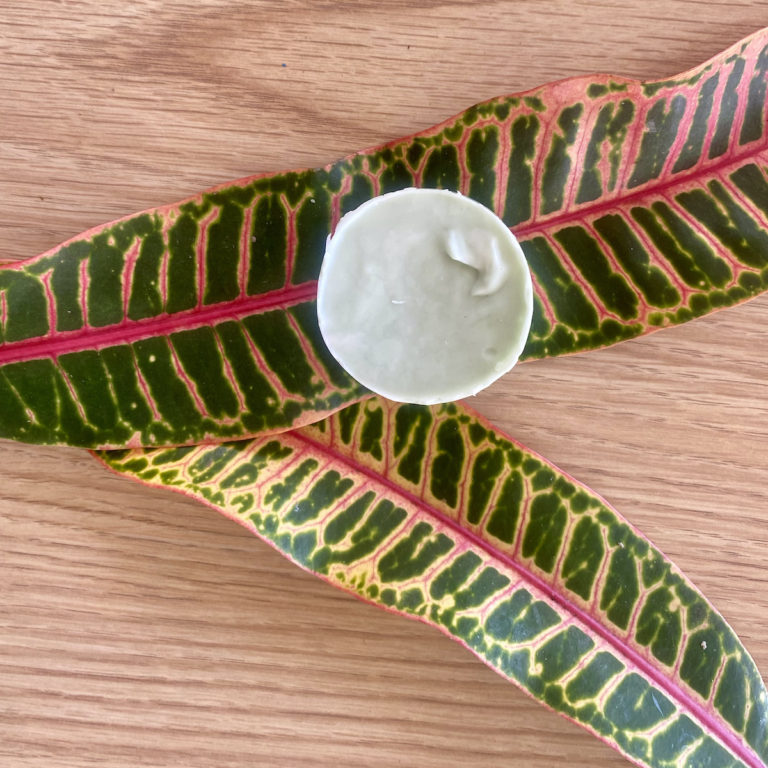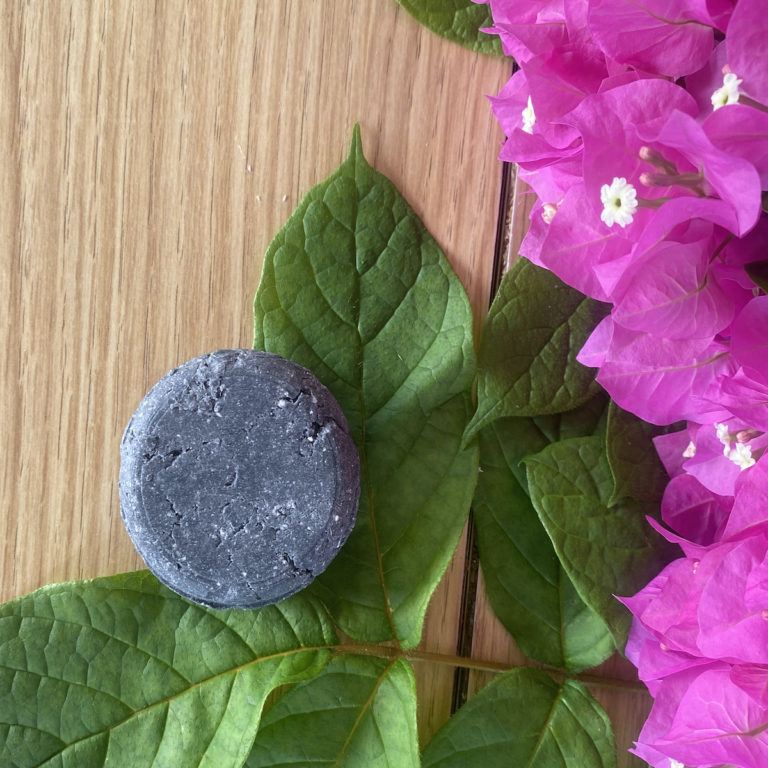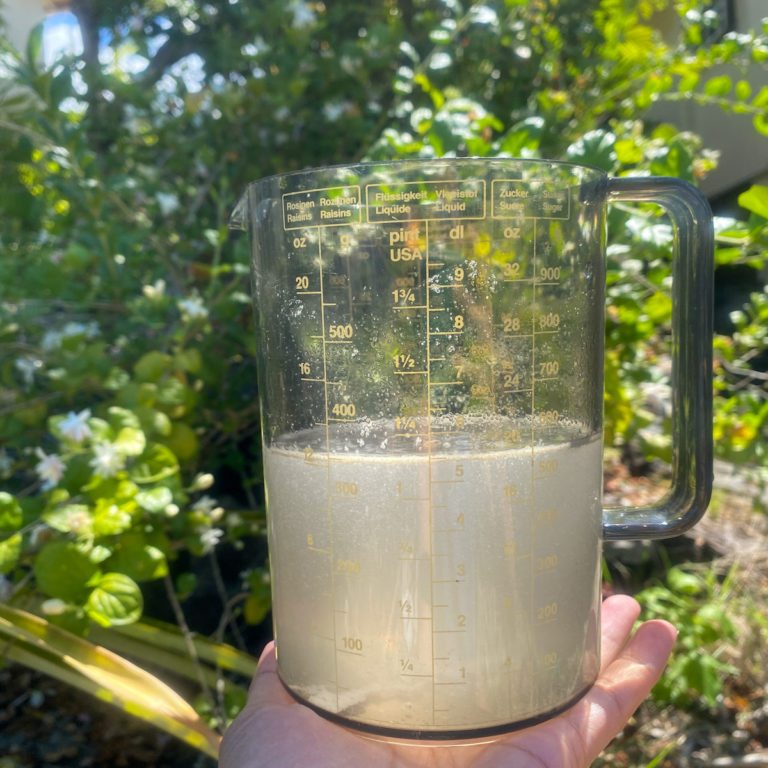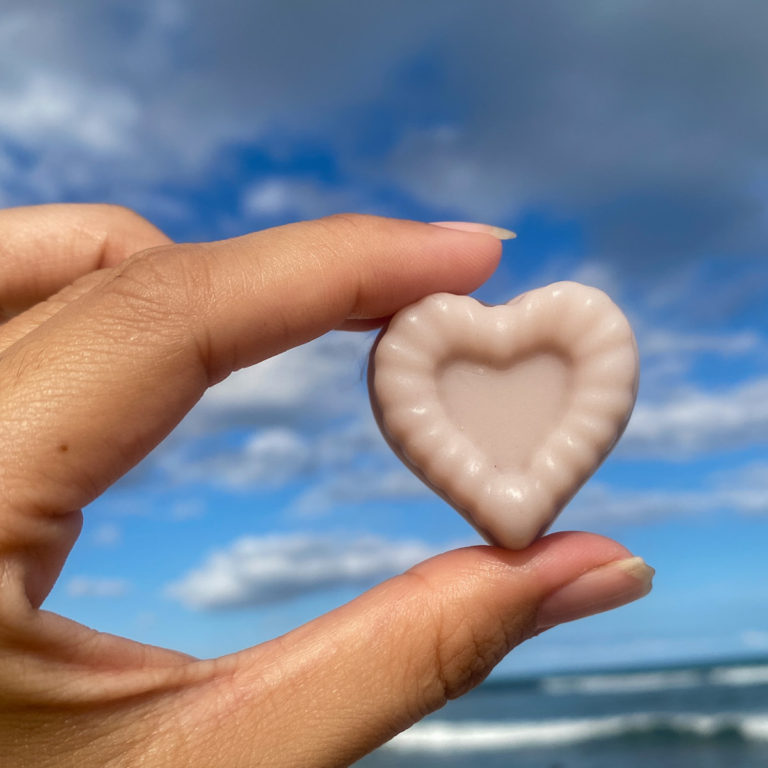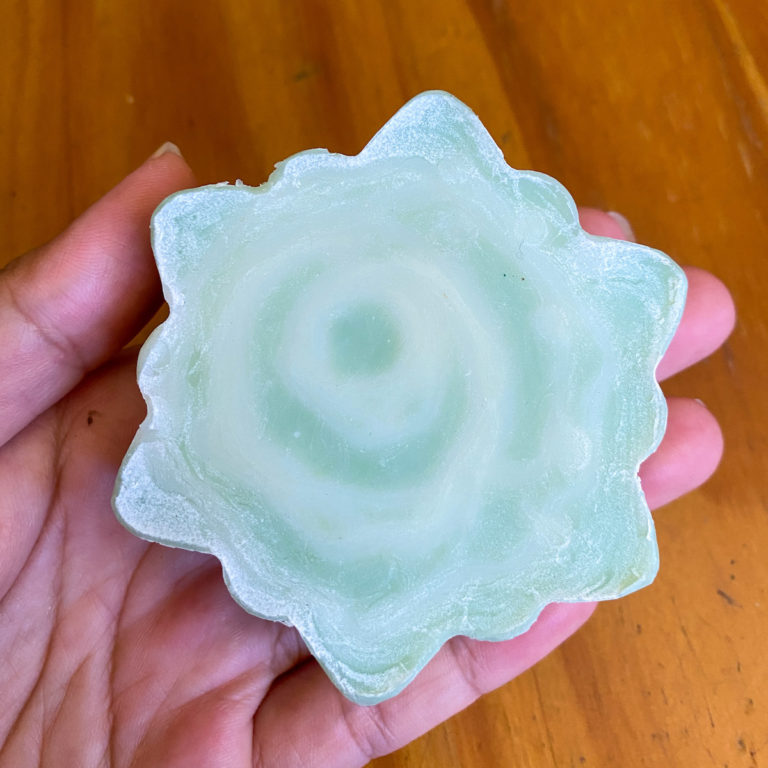8 Best Kitchen Scales for Soap Making
Regardless of the question if making soap is your hobby or your business, accurate measuring is essential, and for that, you need a good, reliable kitchen scale. This can be harder to find than you might think, which is why I’m here to help.
The best kitchen scale for soap making for most people is the My Weigh KD-8000 Kitchen and Craft Digital Scale. It offers very accurate weighing and several measuring units, is durable, and is easy to clean.
In this article, I will first explain what to look out for when you’re looking to purchase a (new) scale for soap making. Then, I will give you eight great options that are all very suitable for soap making (hobby or professional). I will also discuss why a scale is so important in the process of soap making, other supplies that you need for soap making, and I’m giving you a great recipe for coconut/olive oil soap.
Some Things To Look Out for Before Purchasing a Scale
For the Beginners
If you aren’t an advanced soap maker (yet), you might wonder what exactly is important when you’re buying a scale for this purpose. It’s smart to go over these important features before buying something you might regret later.
Advanced
If you are a more advanced soap maker, you might already know very well what you find important when it comes to a scale, and in that case, you should continue doing what works for you!
Here are a few features that are very handy to have included in your new scale*:
- The scale should be able to measure in imperial as well as metric in order for the soap making process to go smoothly.
- If you are a hobby soap maker, if the scale can handle up to about 13lbs, it should be sufficient. If you are a professional soap maker, you might want to go for a scale that can handle more than that).
- Make sure it’s easy to clean.
- If the scale can automatically turn off, that would be a nice feature.
- Ideally, the scale will have a tare feature that will subtract the container’s weight automatically. However, this is something most scales definitely have these days.
*Everyone has personal preferences; what I’m mentioning here are just the general features that might come in handy for most soap makers.
Now that you know which things to look out for on a kitchen scale, we can start looking at some options. Even if you don’t want to purchase a big fancy kitchen scale, make sure that the one you’re using is at the very least accurate to the nearest gram or 1/10th of an ounce.
Especially if you’re making soap in small batches, there is less room for error. The following scales are all great options for soap-making in the year 2021.
My Weigh KD-8000 Kitchen And Craft Digital Scale & AC Adapter
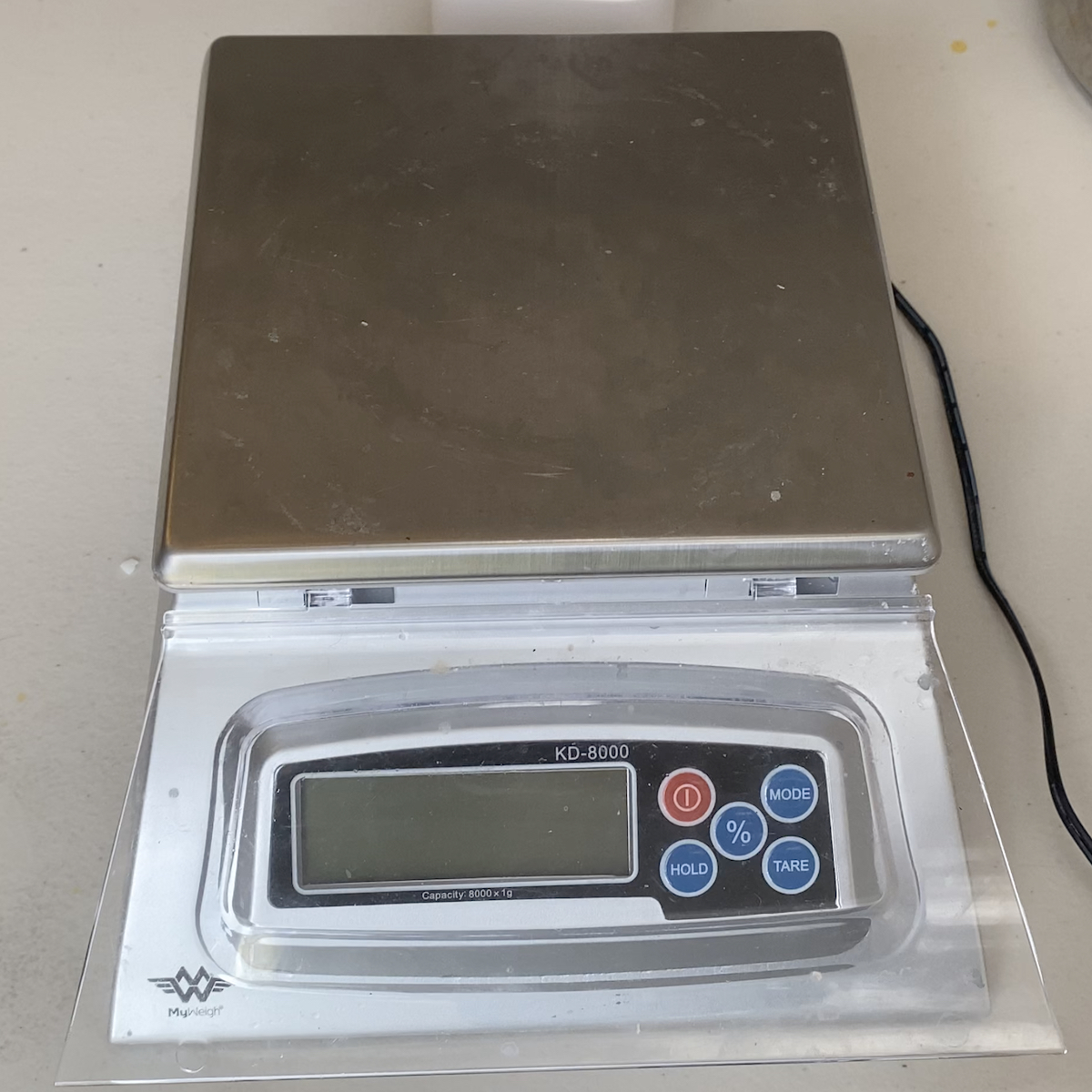
About this scale: It has a percentage weighing function, which makes it a great scale for soap making (and baking) because it allows for a very accurate weighing. You can choose between weighing in kg, lbs/oz, lbs, or oz. It’s a large scale that has a capacity of maximum 8000 grams. The stainless steel platform is easy to clean, and the display has a bright backlight.
- Pros: Durable, easy to clean, very precise weighing possible, four weight measuring options.
- Cons: The adapter doesn’t come with the scale, so you’ll need to purchase this separately.
INEVIFIT Digital Kitchen Scale
About this scale: It can weigh up to 13 pounds, which is enough for soap making. Very accurate weighing possible, and it has a big LCD screen, which makes reading the numbers off of it really easy. It has a sleek and elegant look, and it has received great ratings so far.
- Pros: Very precise weighing is possible; it’s easy to clean, several measuring options.
- Cons: Does not store data.
MIRA Digital Easy to Use Kitchen Food Scale
About this scale: This scale has three weighing options: grams, pounds, and ounces. It looks very nice and sleek, and the numbers on the scale are easy to read. The scale is lower priced and offers very accurate weighing.
- Pros: Easy to clean, good looks, accurate weighing
- Cons: Compared to the other options, it has fewer weighing options that can only measure up to 5 kg.
My Weigh KD-7000 Digital Stainless-Steel Food Scale
About this scale: The scale can weigh very accurately, has four weighing options, and is easy to clean. It’s a bit less sleek looking than other options on this list.
- Pros: It has a cover that protects the screen and buttons, which makes it really easy to clean, precise weighing possible, four weighing options.
- Cons: Less nice looking, and users have mentioned that it isn’t as durable as it’s supposed to be.
Taylor Precision Stainless Steel Analog Kitchen Scale
About this scale: If you prefer an analog scale for the looks or the usage difference, this is probably your best option. It is a beautiful looking scale (unless you prefer digital looks), the weight limit is 11 pounds, four weighing possibilities, and it’s highly durable.
- Pros: Highly durable, retro looks (if that’s your thing), four weighing possibilities, easy to clean.
- Cons: If you prefer digital scales, this one isn’t for you, quite heavy.
My Weigh UltraShip 75 Lb Electronic Digital Shipping Postal Kitchen Scale (Ultra-75)
About this scale: This scale can weigh up to 75lb (34kg), which is a lot! This is not a necessity for hobby soap making, perhaps you can use it for other purposes, but it will come in handy if you are doing it professionally. It has received good ratings so far, weighing is really accurate, but it’s quite big so that it won’t look the prettiest in your kitchen.
- Pros: For professional soap makers, this might just be the best one since it can handle a lot of weight. Additionally, it also weighs very accurately.
- Cons: The adapter and batteries have to be bought separately, the scale is heavy, and you don’t need a scale that can handle such a heavyweight for hobby soap making.
Smart Weigh Culinary Kitchen Scale
About this scale: This is a lightweight scale that won’t be the main eyecatcher in your kitchen, which can be good or not, depending on your opinion. It’s easy to clean, has several weighing options, has a two-year warranty, and can weigh up to 10kg.
- Pros: It’s a great scale for soap making since it’s very accurate, has several weighing options, and it’s easy to clean.
- Cons: Some users have said that the touch buttons might be a bit too sensitive.
AccuWeight 207 Digital Kitchen Multifunction Food Scale
About this scale: If you like to have a smooth, sleek looking scale that doesn’t take up too much space in your kitchen, this should definitely be in your top three. It can weigh up to 11 pounds; it weighs very accurately, several units of measurements are available,
- Pros: Small and elegant scale, plenty of measuring units to choose from, and very accurate measuring.
- Cons: The 11-pound limit is a little low.
Why a Scale Is So Important When It Comes to Soap Making
In the process of making soap, you will need to weigh oils, lye, and liquids. You have to weigh the ingredients instead of measuring them by volume. We don’t use measuring cups etc., for oils and lye because they will slightly vary in form and size depending on the manufacturer. Additionally, everyone will slightly under- or overfill while measuring, and in the soap-making business, everything has to be very accurate.
The weight does not always equal volume, which is another reason why measuring cups won’t do the trick. If you have tried to use measuring cups in the past, you might have noticed that the soap ends up overly oily or lye-heavy, which will result in a product that’s not safe to use. Avoid recipes that use cups for measuring instead of weighing them.
Other Supplies That You Need for Soap Making
Getting the scale is a big step in the process of getting ready for soap making. Only with a scale, though, you can’t do much. You will need more supplies, obviously. Which essential supplies, I will explain to you right below.
Thermometer
During the process of soap making, you will need to be aware of the temperature of the lye and oil solutions. Before mixing the oils and the lye, make sure that both solutions’ temperature is anywhere between room temperature and 125°F. This Etekcity Lasergrip is a great one!
Stick Blender
If you do not use a stick (also called immersion) blender, you might take a very long time to stir the soap by hand. Many people have one of these blenders already, but they’re very cheap to purchase and available everywhere if you don’t. If you enjoy soap making and you do it a lot, getting a bit of a nicer one will make the experience more pleasurable, but it’s totally up to you.
Containers for Mixing Lye
You will need containers for mixing and measuring the lye. The first thing you’ll need to do is weigh out the dry lye that’s needed for your recipe. For this, you’ll need small containers or small disposable bath cups. The solution of lye can reach temperatures of 200°F (93.3°C), so make sure you’re not using glass containers at the beginning. You want to avoid shattered containers while making soap.
If you don’t want to use plastic and can’t find a better alternative than glass, you can also work in your kitchen sink in order to avoid any accidents. However, instead of using glass/plastic containers, you can consider stainless steel or recycled plastic (which should have a recycle #5 at the bottom).
Containers for Mixing Soap Batter
By this time, the lye’s temperature has gone down sufficiently for you to use glass containers if you’d like. But choose any type of container that you prefer. Depending on your batches’ size, you might want to keep in mind that it should fit or if you should buy several containers to get the whole batch mixed.
Silicone or Heavy Duty Plastic Spoons and Spatulas
Obviously, these spoons and spatulas are used for stirring the lye with water or another type of liquid, also for stirring the soap better to the necessary extent. You can find these types of spoons and spatulas in your local store or online easily. Avoid using aluminum materials, and look for silicone or heavy-duty plastic.
Goggles and Gloves
Goggles and gloves are important safety gear that is an absolute must! You never know if you might accidentally splash any type of ingredient on your face, and you definitely do not want to get any into your eyes; otherwise, you can rush to the emergency department. Don’t assume that your regular eyeglasses are enough; instead, get goggles that are specifically meant for working with chemicals, such as these Cindy’s Tapes.
Protecting your hands is also important, especially if you do a lot of soap making. It would help if you used disposable nitrile or latex gloves or dishwashing gloves. Wearing a long-sleeved shirt is also ideal since you’re working with high temperatures at some moments, and you don’t want to burn your skin.
Soap Molds
This is another essential product you need in order to finish your soap. If you don’t have a soap mold or you forgot to buy one, you can use an empty and rinsed milk carton instead or a sturdy shoebox.
Extras
- Soap cutter. If you want to get perfectly even sized soap bars and you’re willing to invest a little bit in it, a soap cutter is what you need. There’s plenty of great ones available on Etsy.
- Mesh teaspoon. If you want to make pencil line designs in your soap, this is a great tool.
- Strainer + funnel. For those who want to add infused oils or herbal teas.
- Soap stamps. There’s plenty of nice ones of these available on Etsy.
Soap Making Recipe Coconut & Olive Oil
Ingredients
- 10 oz. olive oil
- 20 oz. coconut oil
- 9 oz. distilled water
- 4.78 oz. 100 percent pure lye
- Essential oils
- Colorants (optional)
- Dried herbs or flowers (optional)
Make sure that you have all of the tools that I’ve discussed previously in this article. For this particular recipe, you will also need a slow cooker.
Directions
- Put on your safety gear (goggles and glasses) and measure all of the ingredients. Set the slow cooker to low and add the coconut oil.
- The coconut oil is melting, so you can prepare the lye solution. Add the lye to the water slowly (don’t do it the other way around, it’s unsafe!)
- Stir the solution carefully with a spatula while it’s getting hot.
- Put the lye solution aside and let it cool for about 15 to 20 minutes.
- As soon as the coconut oil has melted completely, add the olive oil, and stir it well.
- Check the temperature of the oils and as soon as they’ve reached 120 to 130°F (48.9 to 54.4°C), place the stick blender on the side of the slow cooker. Poor in the lye gently to avoid splashing. Then stir it slowly.
- Slowly stir the mixture with the blender while moving in circles; keep the blender fully immersed, so you don’t get air bubbles.
- Keep the stirring going for about 10 to 15 minutes until the soap has reached its trace. The oil and lye should look something like a pudding.
- Cook with the slow cooker on low for 50 minutes; as soon as you see bubbles, stir lightly.
- Turn off the slow cooker. Let it cool off until the temperature of the mixture drops below 180°F (82.2°C). Then add essential oils and colorant (if you’re using these). Mix it well.
- Pour the mixture into the soap mold and smooth the top with your spatula. Tap the mold lightly to avoid bubbles, and you can top it with dried herbs in case you’re using these.
Finishing Steps
- After the soap has been poured into the mold, you should let it sit for 24 hours.
- As soon as the soap has cooled off, you can carefully remove it from the mold.
- Now it’s time to cut the soap into bars with a soap cutter or knife. If you just used a soap mold for one soap bar, you can simply pop it out.
- You can use the soap at this point, although it’s best to let it dry for another week because it will improve its quality and hardness.
Final Thoughts
Making soap can be a lot of fun and very rewarding to eventually see your hard work’s end result. However, in order to get yourself a pleasing end product, you must use the right tools and ingredients. After you have purchased everything that’s necessary, you can begin the soap making!

